You are here
Iceland's Ring Road is one of the most beautiful and thrilling road-trips in the entire world. This 1,332-kilometer (828-mile) coastal highway circles the country and navigates through an amazing variety of sights, experiences, and adventures that will stoke your desire for exploration. While you can certainly push to complete this journey within a week, a 10- to 14-day itinerary is a great amount of time to investigate the main attractions as well as some less-trafficked and more unique niches.
The adventure begins as your plane approaches the treeless, moss-covered volcanic landscape. You land at at Keflavík Airport, throw on your backpack, and beeline to the rental car station. While a two-wheel drive car will do for this journey, you may fancy a four-wheel drive vehicle to cover the more rugged paths and rocky dirt roads. There are plenty of available hotels and hostels along the route, but there's probably a good chance you came prepared with your own tent. You may even entertain renting a vehicle with the tent already mounted on top! Whichever you choose, the next campground is just a short drive away, and just beyond the free-roaming sheep...
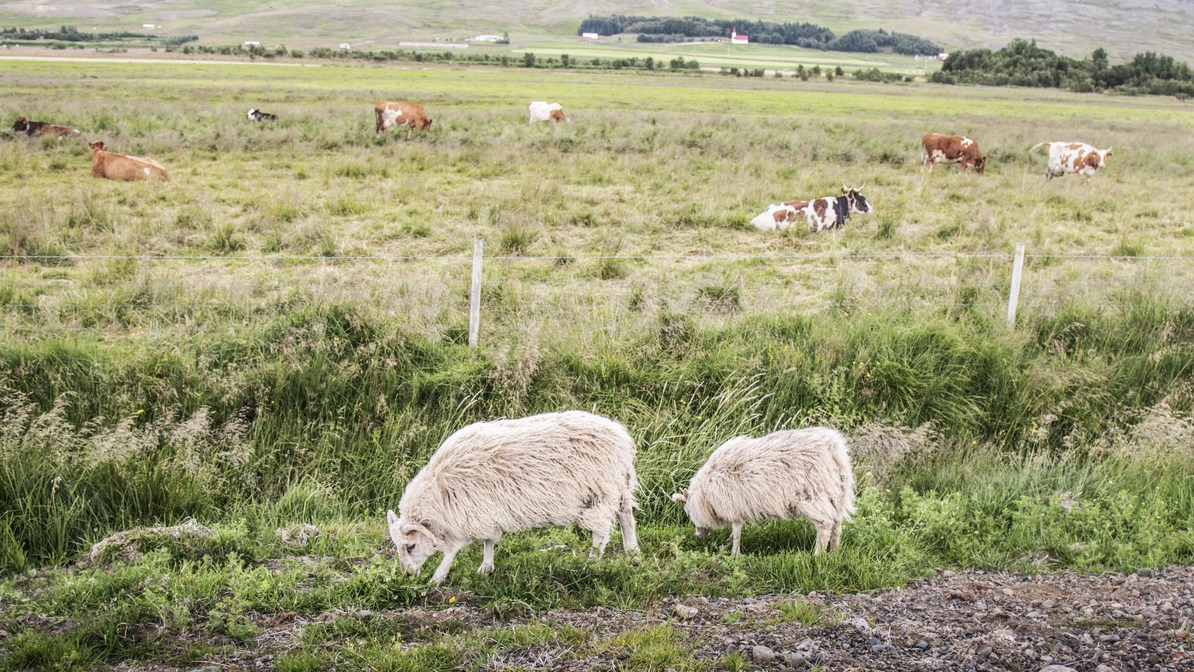
You’re certainly welcome to embark in either direction around the country, but there may be some scheduling advantages to taking the counter-clockwise track. This way you can spare any extra time at the end of your trip with of couple of days in the western part of the country and the Snæfellsnes Peninsula. Now that we've covered the groundwork, let’s buckle up get on with the road trip!
Reykjavík, Iceland’s capital and largest city, is both a great starting and ending location. The weather everywhere is pretty much unpredictable, so be prepared to experience all of the seasons every day! Seriously. If you need to adjust your itinerary due to impending storms, check out our 48 Hours in Reykjavík post for some fantastic ideas to fill your time: Hallgriímskirkja, Perlan, Nauthólsvík Geothermal Beach, and the Ægissíða Biking and Walking Path.
1. Southern Iceland
The beautiful southern Icelandic landscapes welcome you as you find your way east on the Ring Road. While passing in and out of towns, you’re very likely to come across hitchhikers from around the world. Keep in mind that Iceland is the safest country in the world, but use your best judgment when helping others out with a ride. Along your way, there are some incredible waterfalls, a national park, and an iceberg lagoon:

- Seljalandsfoss: Visible from the road is a 60-meter (197-foot) waterfall that is among the most recognizable in the country. The massive amount of water pouring over this high cliff, believed to once be Iceland's coastline, sources from the volcano glacier Eyjafjallajökullin. A large cave-like cutout behind the falls was created through erosion and allows visitors to embark on a walking path that circles the thundering water. Bring waterproof clothes for the heavy mist and a good pair shoes for the slippery rocks
- Seljavallalaug Zwembad: Natural hot springs are undoubtedly a main feature of Iceland. If you’re looking for a more secluded hot spring experience, Seljavallalaug is a built-up pool set on the side of a valley surrounded by mountains. The 1-kilometer walk to the pool from the car lot is completely worth the trek as you settle into the naturally heated water amid the beautiful scenery.
- Vik and the Black Sand Beaches: Making your way along the southern coast, you can stop in the small town of Vík, which hosts some of the most expansive black sand beaches in the country. The color and architecture are naturally formed from volcanic ash and historic lava flows making contact with the water.
- Fjadrárgljúfur: Not far off of the Ring Road lies a 2-kilometer (1.25-mile) long canyon with 100-meter (328-foot) high moss-covered walls that were carved and washed out by glacial melt thousands of years ago. A majestic walking path goes along the canyon’s edge up to these cliff tops. You will be graced with spectacular views that span from the high green walls down to the low flowing water.
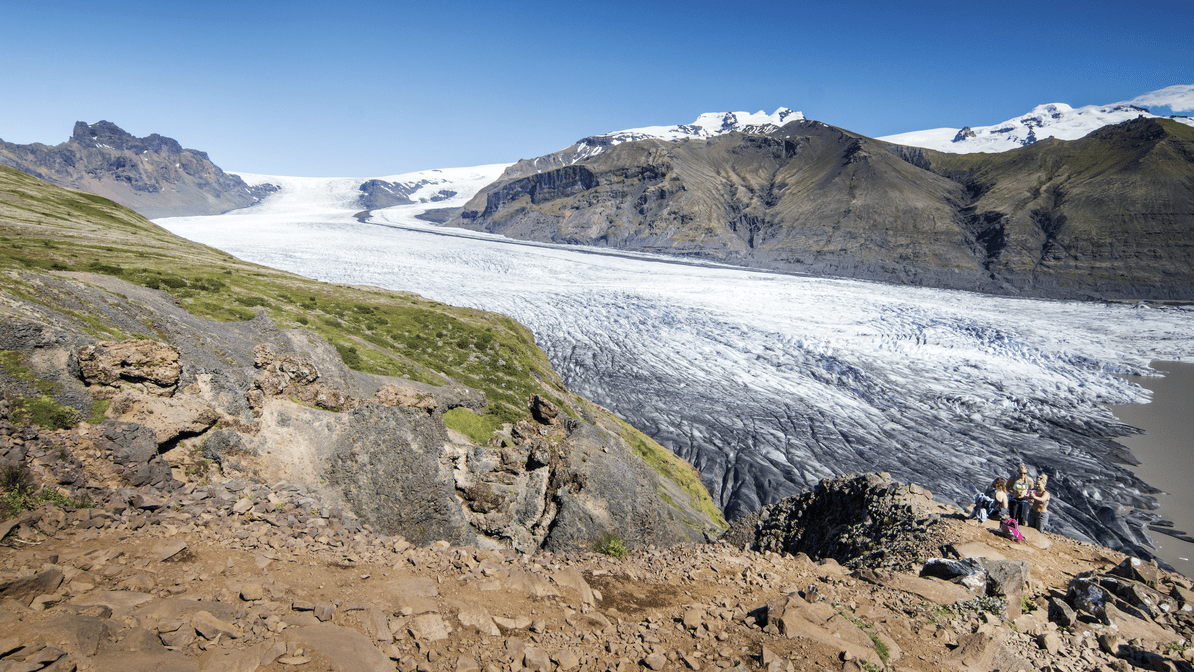
- Svartifoss and Skaftafellsjokull: Vatnajökull National Park is the largest national park in Iceland and offers a variety of landscapes created by the combined forces of rivers, glacial ice, and volcanic activity are to be marveled. Svartifoss is Icelandic for "Black Falls" and is nestled into an amphitheater of tall basalt columns created by rapidly cooling lava. This short hike can be continued over to Sjónarnípá where you’ll be immediately overwhelmed by an incredible view across Skaftafellsjökull, a glacier flowing down the steep mountain side into a proglacial lake far below.
- Jökulsárlón: Continue onto Iceland’s most famous glacial river lagoon at the base of Breiðamerkurjökull. You can even hop on a boat tour to get close and personal with some of the icebergs! There are unmarked trails that lead around the rim of the lake for several kilometers. Diamond Beach is another black sand beach on the coastal side of Ring Road along where you will likely find smaller icebergs washed ashore.
2. Eastern Iceland
Making your way north along the eastern coast, the Ring Road will begin to weave in and out of the long fjords. These immense landmass carvings were created over millennia by glaciers scratching away and eroding the hard volcanic rock. On your way, there are a number of interesting lighthouses, small towns, and fishing villages; each with their own special scene to share:
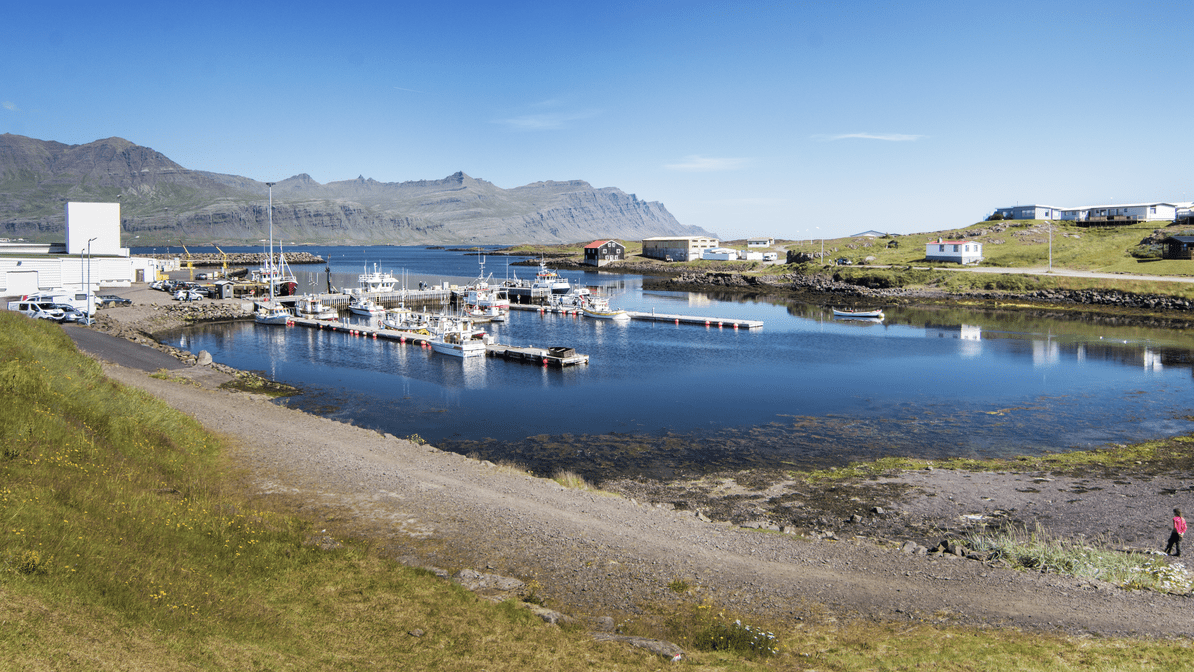
- Hvalens Lighthouse: Between the cities of Höfn and Djúpivogur lies a bright orange concrete structure standing 11.5 meters (38 feet) tall along the Atlantic coast. This lighthouse marks a prominent cape, the Austerhorn, on the southeastern corner of the country, and has a light that is still in operation.
- Djúpivogur Campsite: German merchants began trading in the small town of Djúpivogur in 1589. A public campsite is nestled between high rock formations that help protect you from the wind. There is a striking view over the harbor to the fjord named Berufjörður. There are also unique wooden Lodging Barrels, owned by the Hotel Framtíð, which offer pet-friendly accommodation. During the summer, day trips are offered to the Island of Papey where you can find the smallest and oldest church in the country as well as a wild puffin sanctuary!
- Seyðisfjörður: This small town, located over a high mountain to the east of the Ring Road, is well known for its old wooden buildings and remnants of urban street configurations. The Stafirnir Road is one of Iceland’s most spectacular routes and follows the Fjardara River down to the mouth of the fjord. An incredible hiking path begins at the Neðri-Stafur cliffs at the top of the road and follows the water down a series of cascading waterfalls surrounded by high cliffs with over a dozen more high waterfalls pouring down their steep canyon sides. While you may get your feet wet, this is certainly one of the most serene and calming hiking paths in the county.
3. Northeastern Iceland
Back on the Ring Road, your adventure will turn to the west as you drive across the northern section of the country. The highway is now inland from the coast and the landscape transforms into a wind-eroded, red-toned, and dry complex. While the entire area may seem uninhabitable, there are actually a surprising amount of wildflowers and mosses present throughout the region. The Diamond Circle, as it is nicknamed, beholds a number of hot spots, waterfalls and hiking opportunities for you to explore:
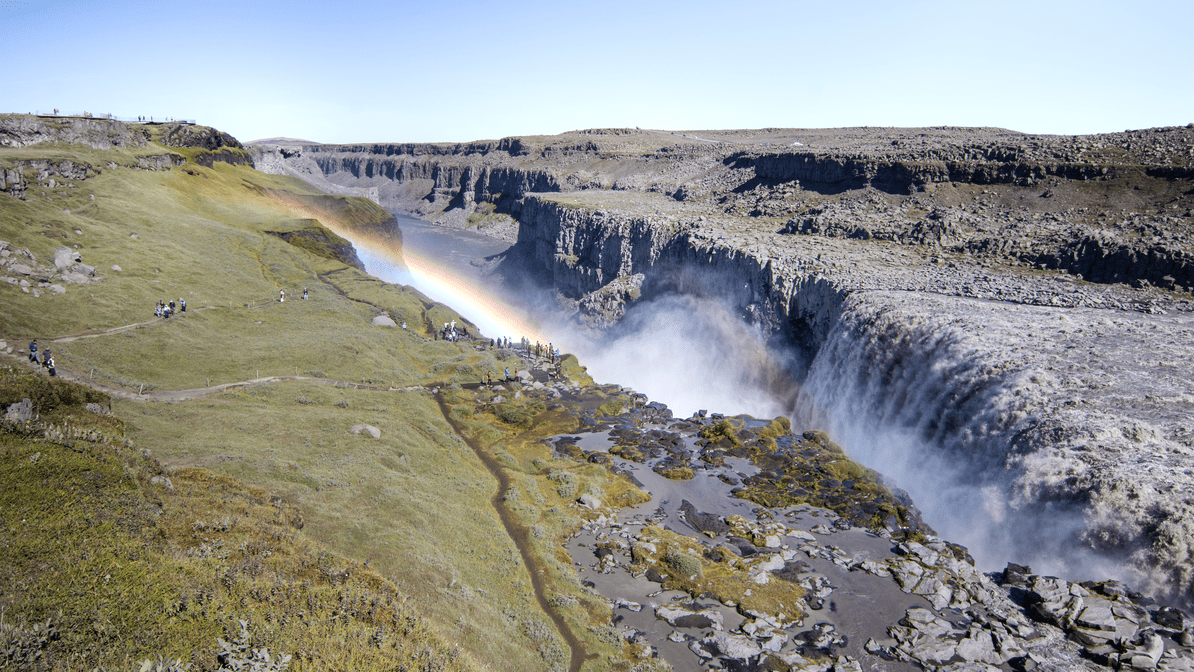
- Dettifoss: Nicknamed “tumble falls,” this the largest waterfall in Iceland and the most powerful in all of Europe. It spans over 100 meters wide and drops 45 meters (148 feet) into a wide canyon called the Jökulsárglúfur. It is on the Jökulsá á Fjöllum, one of Iceland’s largest rivers which sources from Vatnajökull, Iceland’s largest glacier. A 6-kilometer (3.75-mile) hiking path forms a circuit route from Selfoss, a second waterfall upstream, to Dettifoss and to the rock walls of Sanddular. (Take Dettifossvegur (Route 862) approximately 25 kilometers (16 miles) to the large parking area next to the falls.)
- Námafjall Geothermal Field: Just a few kilometers east of Lake Mývatn lies Hverir, a high-temperature geothermal area with steaming fumaroles and bubbling mud pits. It is part of the Námafjall Geothermal Field, which is one of the largest geothermal areas in the country, and the most easily accessible. Upon your arrival, you’ll immediately be greeted by the incredibly strong smell of hydrogen sulfide and the hissing of natural gas vents. There is a circular path that allows you to safely explore the vibrant landscape.
- Mývatn Nature Bath: The Mývatn Nature Bath, also known as Jarðböðin, is a beautiful alkaline lagoon heated by the natural geothermal activity of the region and surrounded by a colorful landscape. These murky spa waters offer a special experience for thousands of guests through bright warm summers and dark serene winters. There are also two steam baths, a natural sauna, and an enclosed restaurant. Many tourists prefer this less populated destination over the Blue Lagoon!
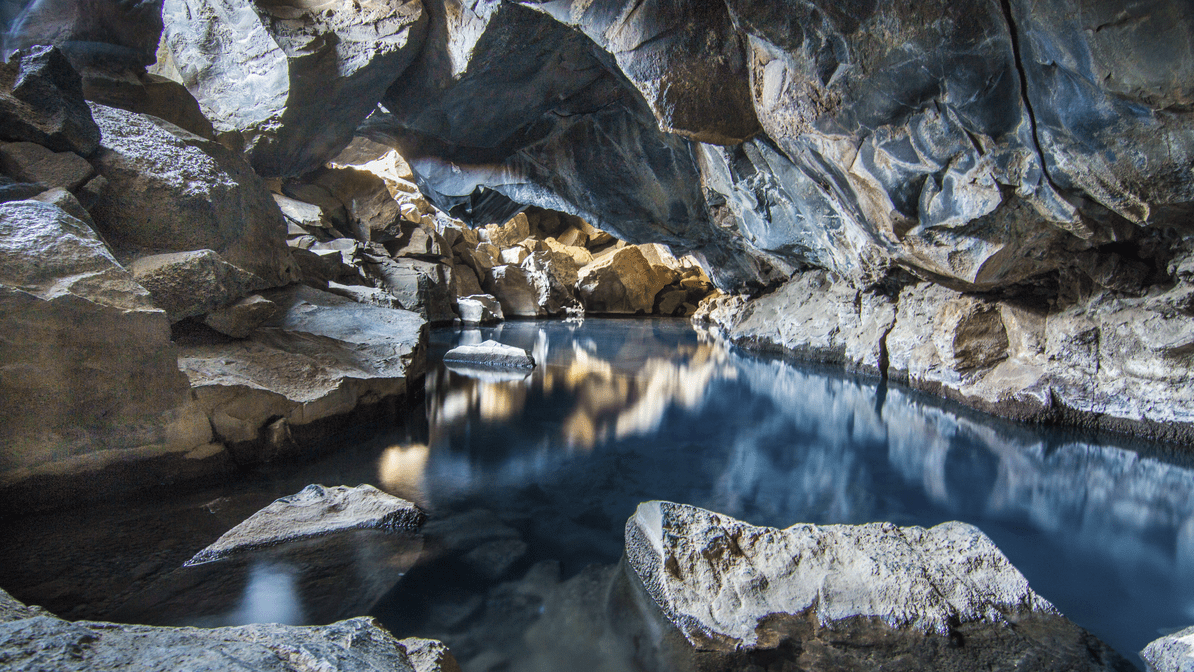
- Grjótagjá: Grjótagjá is a small and secluded lava cave and hot pool located near Lake Mývatn, but swimming here is prohibited. It is free and open to the public for inspection and photography. Enter at your own risk, and be aware that rocks are capable of falling or collapsing from the roof of the cave. Fans of the popular HBO series “Game of Thrones” will recognize Grjótagjá as the film location for the love scene between John Snow and Ygrette.
- Hverfjall: This extinct volcano hasn’t erupted for roughly 4,500 years and now serves as a popular hiking area. The diameter of its crater is only 1 kilometer, and the 3-kilometer hike around the top takes roughly an hour.
- Dimmuborgir: A vast, multi-tracked area with both well-marked pathways and gravel trails that navigates through this zone of caves and massive lava rock formations. The Icelandic folklore, which heavily promotes trolls and legends, maintains the belief that these rocks are trolls frozen in time (and some do look quite life-like).
- Goðafoss: As you continue west past Lake Mývatn, you will come to what is considered one of the most beautiful waterfalls in the country. Goðafoss is 12-meters (39-feet) high and over 30-meters (98-feet) wide with large, rocky promontories that divide sections of the water into a grand horseshoe shape. A myth from the early days of Iceland tells of a prominent chieftain violently throwing his statues of Norse gods into the waterfall in a symbolic act of the country’s conversion to Christianity in the year 1000.
4. Northwestern Iceland
So far you’ve hit two national parks, a couple of hot springs, some great hikes, and possibly some stone frozen elves! All of this adventure and you’re only half way around the island! Akureyri is Iceland’s second largest city and next on your itinerary. There some magnificent hikes here in the north throughout the Glerárdalur region and one of the country’s largest campsites:
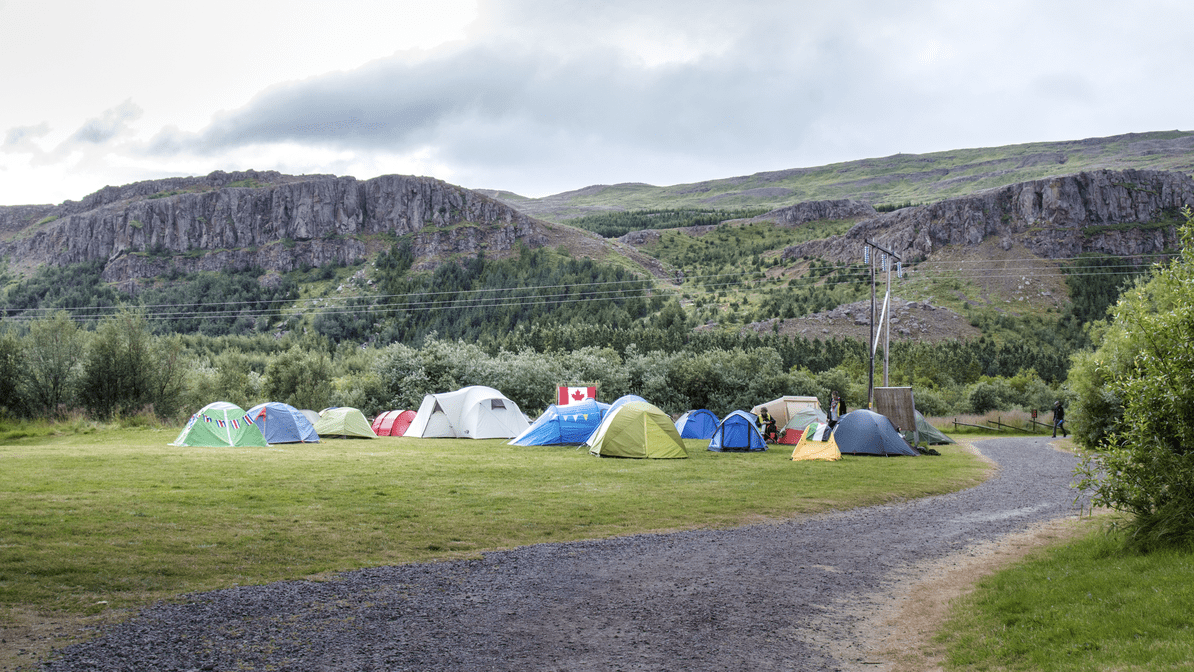
- Hamrar: With 14 individual camping fields and approximately 6 hectares (14 acres) of land, thousands of campers visit Hamrar throughout the year including individuals and families, schools, and corporations. There is a disc golf, giant foosball, minigolf, and ice skating. The Brunná River cuts through the campsite and has been dammed to create ponds for swimming and small water craft. Each of the camping fields is named after tree species that grow locally such as larch (Larix), poplar (Populus), birch (Betula), and willow (Salix).
- Súlur: This double-peaked 1,213-meter (3,753-foot) mountain rises high over the suburbs of Akureyri and has year-round snow. Most of the mountains here were formed by layers of lava five to 10 million years ago. The landscape is covered with thick moss and can become very wet. However, it leads across beautiful stream beds and offers a different perspective of the region.
- Hvítserkur: This striking 15-meter (49-foot) basalt stack represents the remains of a hardened volcano plug. It was once surrounded by a large crater that has since been washed away by the north Atlantic Ocean in the Húnafjörður Bay. This formation is a popular tourist stop along Route 711, a dirt/gravel road traversable by two-wheel-drive vehicles, located on a short detour off of the Ring Road.
5. Western Iceland
As you head south, you reflect on the amazing memories you’ve created in this magnificent country. These memories will remain close to heart for the rest of your life. You’re closing in on the end of your trip but there’s still a few more treasures to behold:
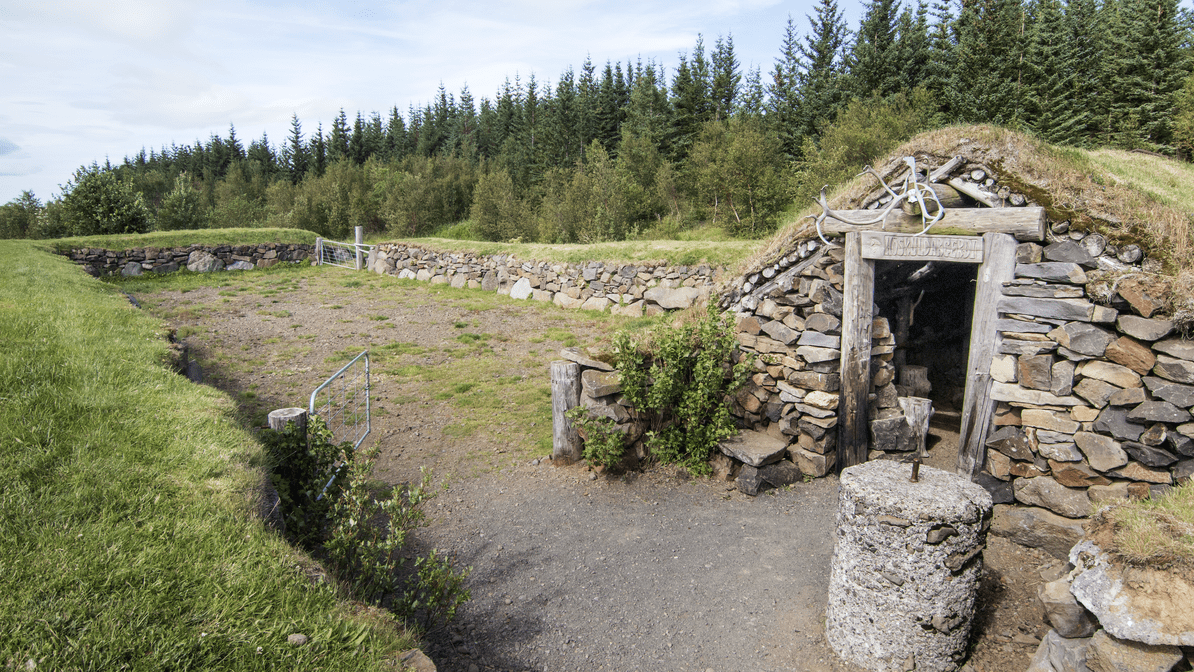
- Grábrókargígar: This National Monument is comprised of three volcanic craters called Stóra (‘big’) Grábrók, Litla (‘small’) Grábrók, and Grábrókarfell. It is estimated to be over 3,600 years old, and it rises over 100 meters (328 feet) above the landscape. A constructed pathway allows you to get up close to this interesting geology and view the surrounding land from the edge of the former Grábrók Volcano.
- Reykholt: This settlement in the western region of Iceland is one of the country’s most renowned historical sites. It was once the home of the writer, scholar and chieftain Snorri Sturluson, who lived here during the 13th century. There is an incredible amount of unique elements to explore and learn about including Reykholtskirkja (Church of Reykholt), Royal Grove, Snorri’s Garden, the Old District School, Snorrastofa, Site of the Ancient Abode, a medieval church, the 19th-century church, Skrifla Hot Spring, Höskuldur’s Pen, Snorri’s Pool, and the Húsafell Stones. Archeologists are still working here and finding medieval remains.
- Hraunfossar: A little farther inland is a waterfall that spans over a kilometer and empties into the Hvitá River all year long. The water here doesn’t flow over the earth’s surface; rather, it emerges out from under the Hallmundarhraun lava field, which dates back to an eruption that took place around A.D. 800, shortly before the first arrival of settlers.
Wow, what an experience! You've been on quite the travel tare over the past week! If you didn't get a chance to head to get to the Golden Circle circle at the beginning of the trip, you should definitely plan on traveling around this geothermal hot spot before heading back to the airport. It’s a little over an hour’s drive outside of Reykjavík, and a relatively short divergence from the Ring Road. This extreme tourist area has sights that are very much worth the congestion; Þingvellir National Park, Geysir and Strokkur, Gulfoss, Laugarvatn Fontana. Of course, there are also some wonderful sights and hikes to behold on the Snæfellsnes Peninsula to the west if you so desire: Kirkjufell, Lýsuhólslaug, Saxhóll, and the Rauðfeldsgjá Gorge.
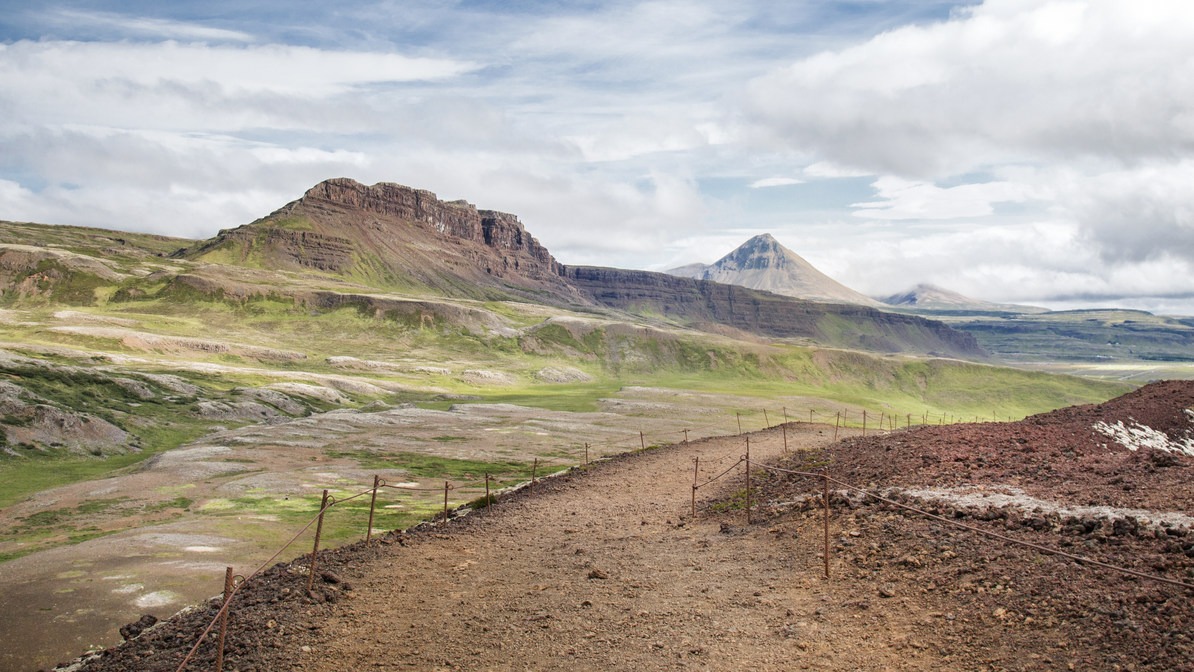
Iceland is such an incredible destination calling for your exploration! What are you waiting for? We've laid out a fun-filled itinerary for you to get started with, but make sure you check out our map to catch a few more ideas to tackle along your way. Be mindful of the weather, and watch out for the thousands of sheep along the road! Góða ferð, and have a wonderful journey! Outdoor Project is counting on you to adventure like you give a damn!

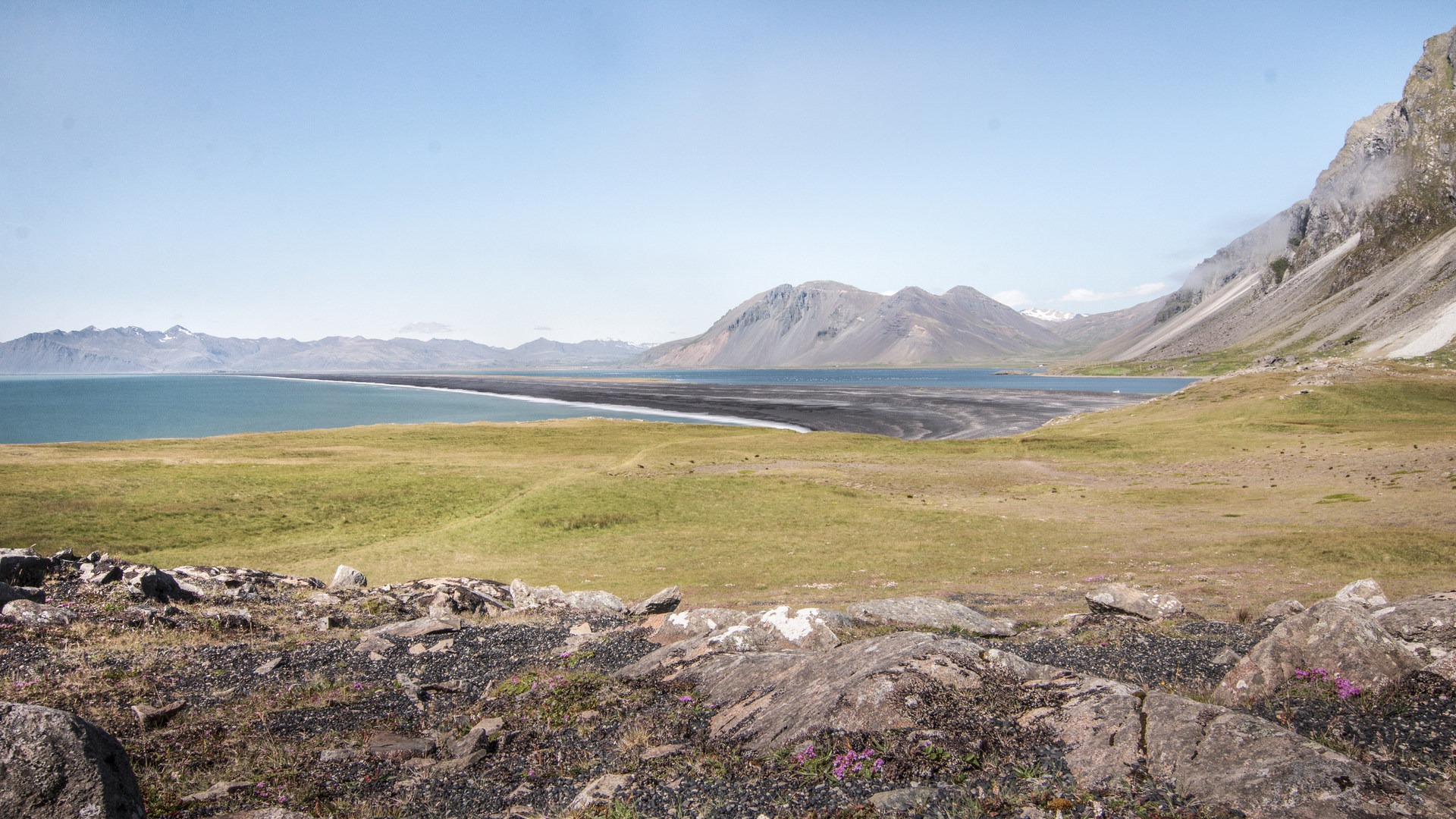

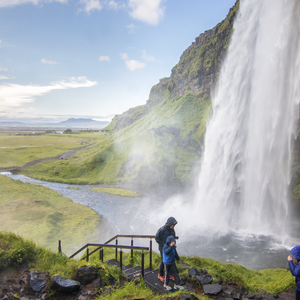
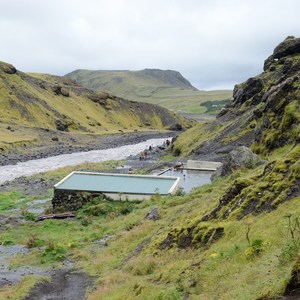
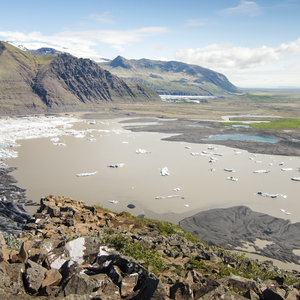
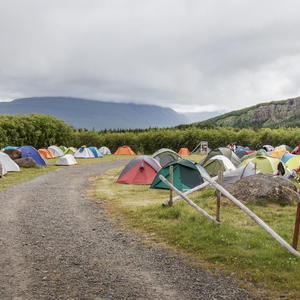
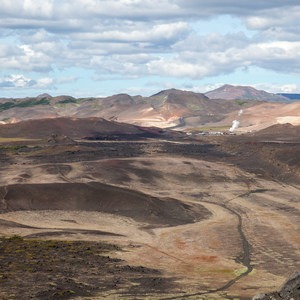

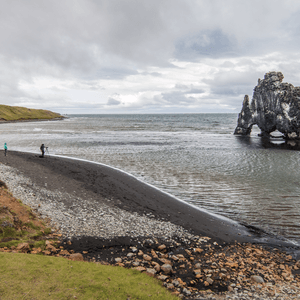
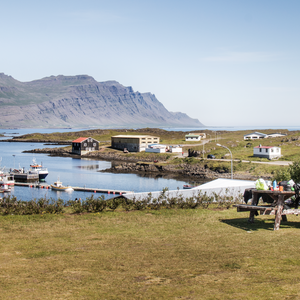


Comments
Sign In and share them.